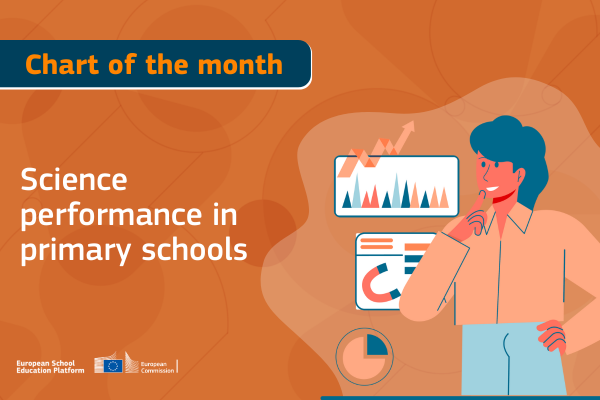Science performance in primary schools: a tale of stability

The Trends in International Mathematics and Science Study (TIMSS) is the International Association for the Evaluation of Educational Achievement (IEA)’s flagship study, and assesses the maths and science achievement of fourth- and eighth-grade pupils every four years. The last TIMSS survey took place in 2023, with results published in December 2024.
59 education systems across the world participated in TIMSS 2023 at grade four (average age 10 years), including 22 EU education systems (Austria, Croatia, Estonia, Greece, Luxembourg and Malta did not participate).
On average across the EU, fourth-grade pupils reached 513 points on the TIMSS Assessment Scale in science, with scores ranging from 550 in Poland to 481 in the French-speaking community of Belgium. Between 2015 and 2023, seven EU education systems (Cyprus, France, Ireland, Lithuania, Poland, Portugal, Slovakia) saw an increase in science performance, while 11 EU education systems (the Flemish-speaking community of Belgium, Bulgaria, Czechia, Denmark, Finland, Germany, Hungary, Italy, Slovenia, Spain, Sweden) saw a decline. The EU average score in science fell by 5 points between 2015 and 2019 and remained stable between 2019 and 2023.
Average science performance in TIMSS 2023 – Grade 4
Notes: The Flemish-speaking community of Belgium, Denmark, and the Netherlands met the guidelines for sample participation rates only after replacement schools were included. Romania did not satisfy TIMSS guidelines for sample participation rates. See IEA TIMSS 2023, Appendix B.5.
The EU-level trend is thus remarkably stable over time, despite the COVID-19 crisis. Recent research on the effects of the COVID-19 pandemic on learning outcomes offers two possible explanations:
- There is a clear association between the length of physical school closures during the COVID crisis and learning losses. Periods of physical school closures were typically shorter in primary education than in secondary education. This might have translated into smaller learning losses for children in primary education.
- TIMSS 2023 took place around two years after the last severe wave of the pandemic. In at least some EU countries, there were signs of a partial recovery in learning outcomes in 2023 compared to the immediate post-COVID period, thanks to remedial and compensatory measures (e.g., targeted additional support for underachieving students, more focused curricula) implemented by education systems.
Background
The Union of Skills aims, among other things, to deliver higher levels of basic skills, including in science. By 2030, the share of underachieving students (aged 15) in science should be less than 15%, while the share of top performing students should be at least 15%.
As part of the Union of Skills, the STEM Education Strategic Plan includes measures to improve science competences starting from an early age. For instance, a STEM competence framework for all learners at all stages of education will be developed by 2026.
Disclaimer: The chart of the month does not constitute a policy position of the European Commission. Neither the European Commission nor any person acting on behalf of the Commission is responsible for any use made of the chart.
Additional information
-
Education type:School Education
-
Target audience:TeacherStudent TeacherHead Teacher / PrincipalPedagogical AdviserTeacher EducatorResearcher
-
Target audience ISCED:Primary education (ISCED 1)


